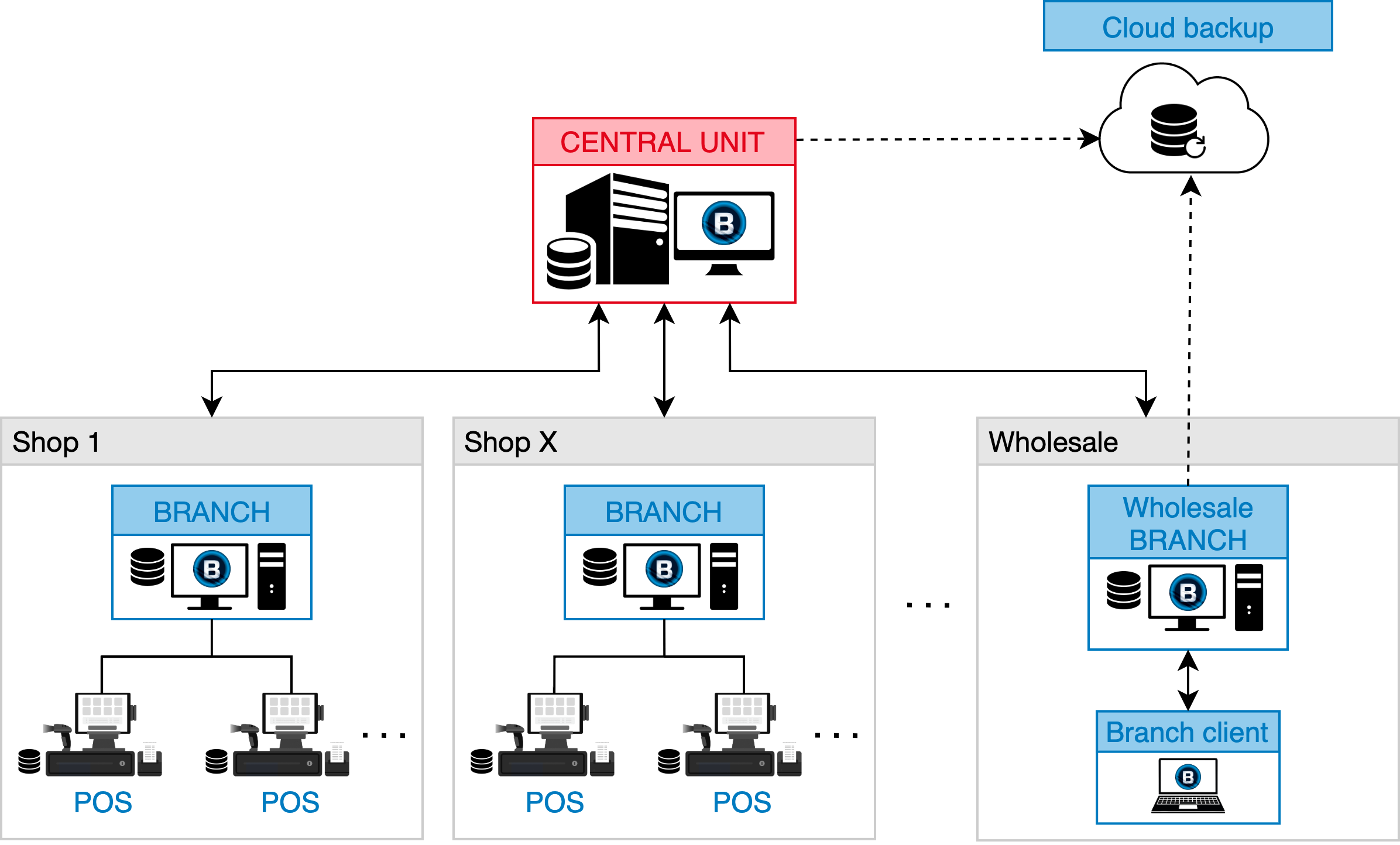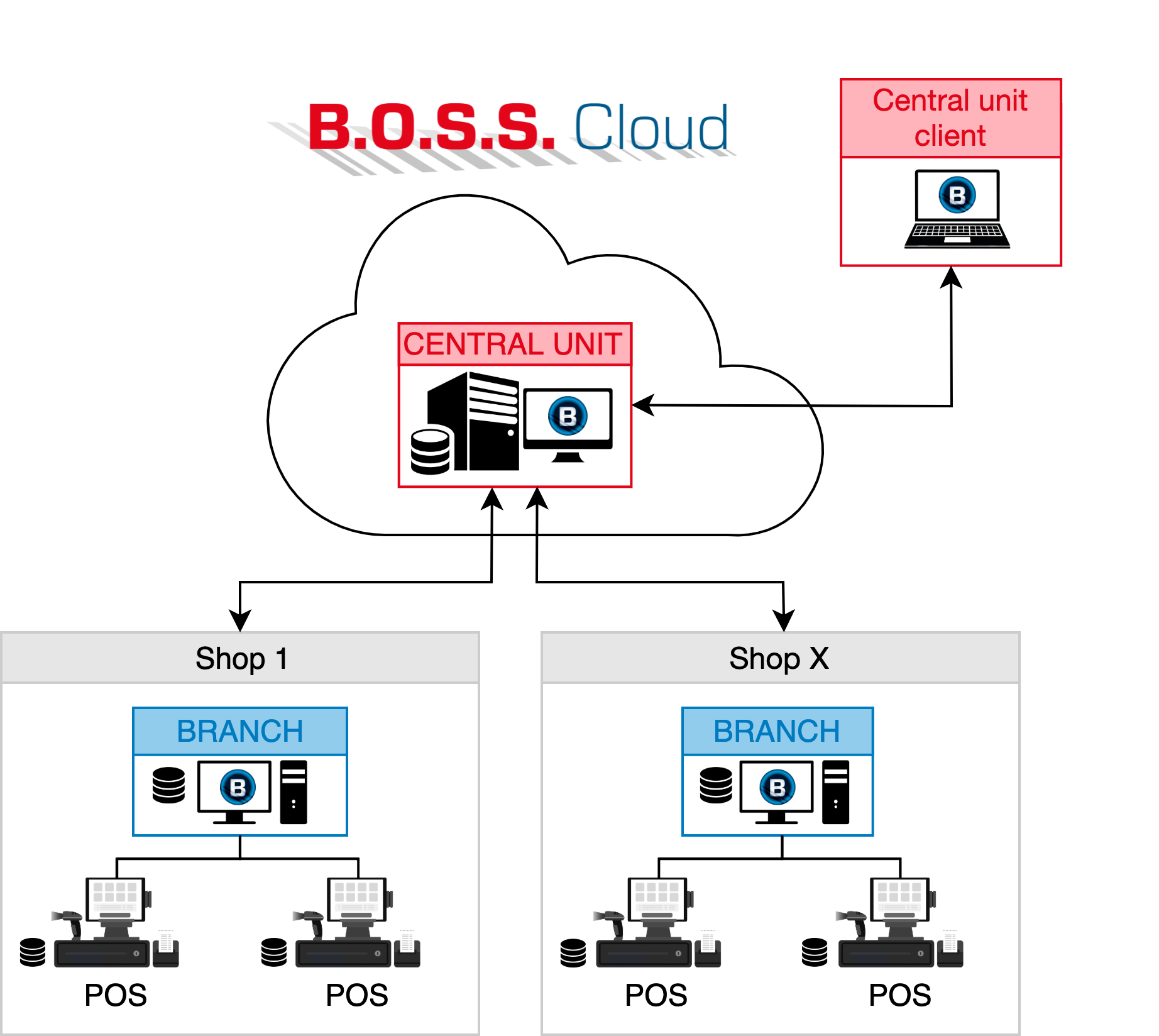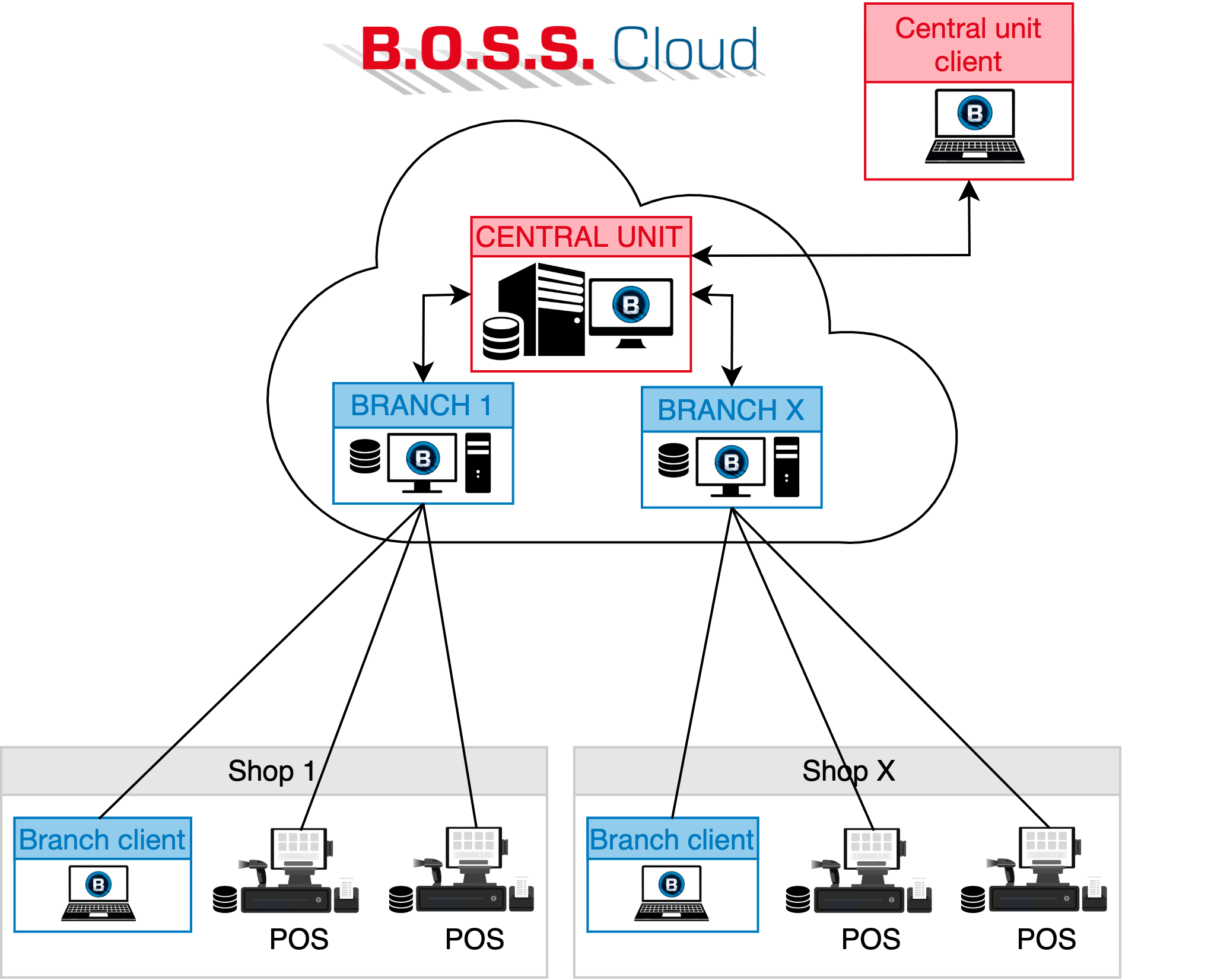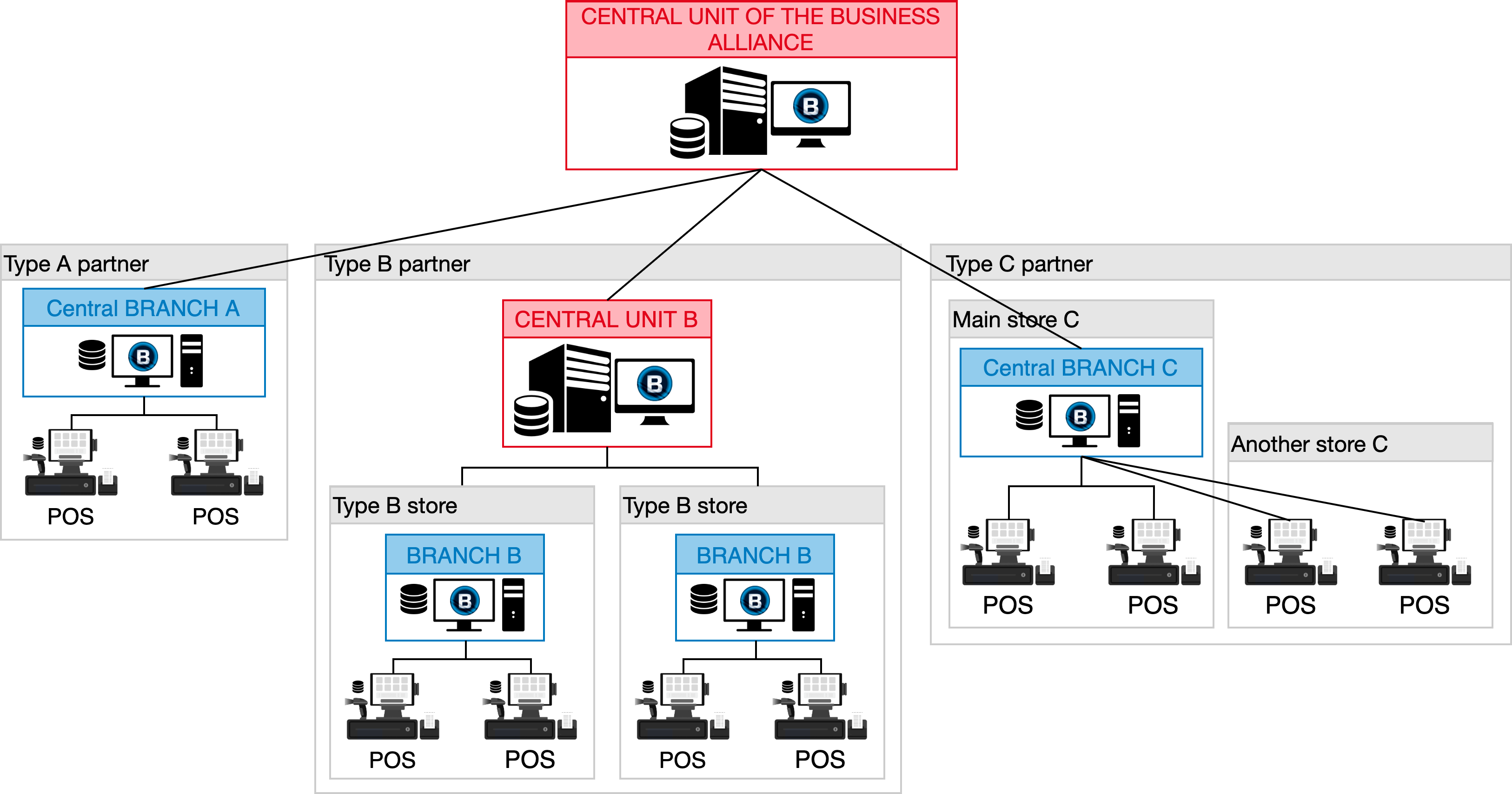Types of architectures
The entire B.O.S.S. Enterprise ERP system was built on the Java 2 Enterprise Edition (J2EE) platform from the very beginning with the help of experienced developers who have developed software applications for banking sector in Germany. Proven open source products such as databases, application servers and other components or interfaces are used. Thus, the B.O.S.S. Enterprise system differs from most competing products in that the Java platform allows it to be independent of the operating system used (Linux, macOS or Windows).
The use of alternative operating systems and open source technologies brings great advantages in terms of system acquisition costs, as operating systems, databases and application servers are provided free of charge.
In practice, the system is usually operated on Linux, macOS and Windows operating systems. Currently 99% of all POS installations run on a Linux operating system.

The architecture can take three different forms:
- As a standard architecture
- As a cloud architecture
- As a franchise network
Standard architecture
When using a standard architecture, the system consists of three independently functioning units: the central unit, the branch unit and the POS module. The applications of the central unit and the branch unit run together with databases on the user's private servers. The central database is located on the central server, the branch database on the branch server (in smaller shops on the computer in the back office, which also serves as a workstation) and the cash register databases in each individual POS.
A data replication process runs in the background between the POS and the branch. A similar data replication then runs between the branch and central unit via internet.
This solution has the advantage that in the case of a connection failure to the central unit, all shops continue to operate autonomously without restrictions. The standard architecture is particularly suitable in locations with a poor internet connection or in locations where the availability of the system in the back office is important.
Cloud architecture
The cloud architecture of the system makes it possible to move central and, if necessary, branch databases including the entire B.O.S.S. Enterprise environment to a secure data center where P.V.A. systems operates cloud services on its own servers. One of the main advantages of this architecture is that we are able to guarantee the performace of the system in the data center, as well as access to branch management from any location and computer and with the highest level of security. The cash register database continues to be located in each POS. Thanks to this structure, the non-stop off-line operation is guaranteed in the case of an internet failure.
Option 1: Central unit in cloud
In this case, only the central unit of the B.O.S.S. Enterprise system including all its components (database, application server, own system configuration and settings) is located on servers in the data centre. The individual work stations of the central unit users (clients) then only contain Java Runtime with the B.O.S.S. client application. Central unit's clients connect to the server in the data centre through a secure connection and work remotely. This solution eliminates the acquisition costs and the costs for operating your own servers, their maintenance, energy consumption, etc. Last but not least, the level of security of the data centre compared to the user's standard server room is considerably higher.
Option 2: Central unit and branch unit in cloud
In the second option, both the branch databases and the central database are placed in the data center and the system is controlled via a remote client in the shops. The advantage of this solution is that there is no need for branch servers or powerful computers and their maintenance. This is because a computer that runs only the B.O.S.S. client requires significantly less power and is less prone to errors. However, the condition for operation in this way is that a high-quality and stable Internet connection must be guaranteed. In the case of an internet failure, the branch functions are not available. POS always contain a database so that sales in shops are not in danger.
This option can be combined with the standard architecture of some branches and one can also place only some of the branches in cloud, for example. Other shops can typically have branch databases located at the shop location.
Franchise network
The B.O.S.S. Enterprise ERP system enables a wide variety of options and their combinations of a franchise network. The architecture and configurability of the system enables effective management of franchise chains, where part of the powers and rights of individual central units and shops are transferred to the higher-level central unit of the business alliance. As a rule, it is mainly a matter of defining and distributing central promotional price lists or, for example, a common customer loyalty system. It is possible to link several types of business partners (type A, B,C, etc.) using different shop structures to the collective franchise network central unit.







